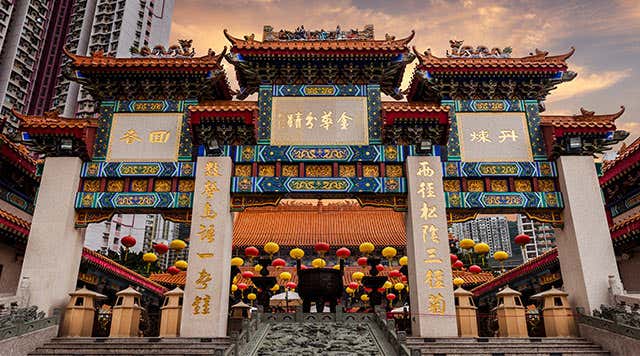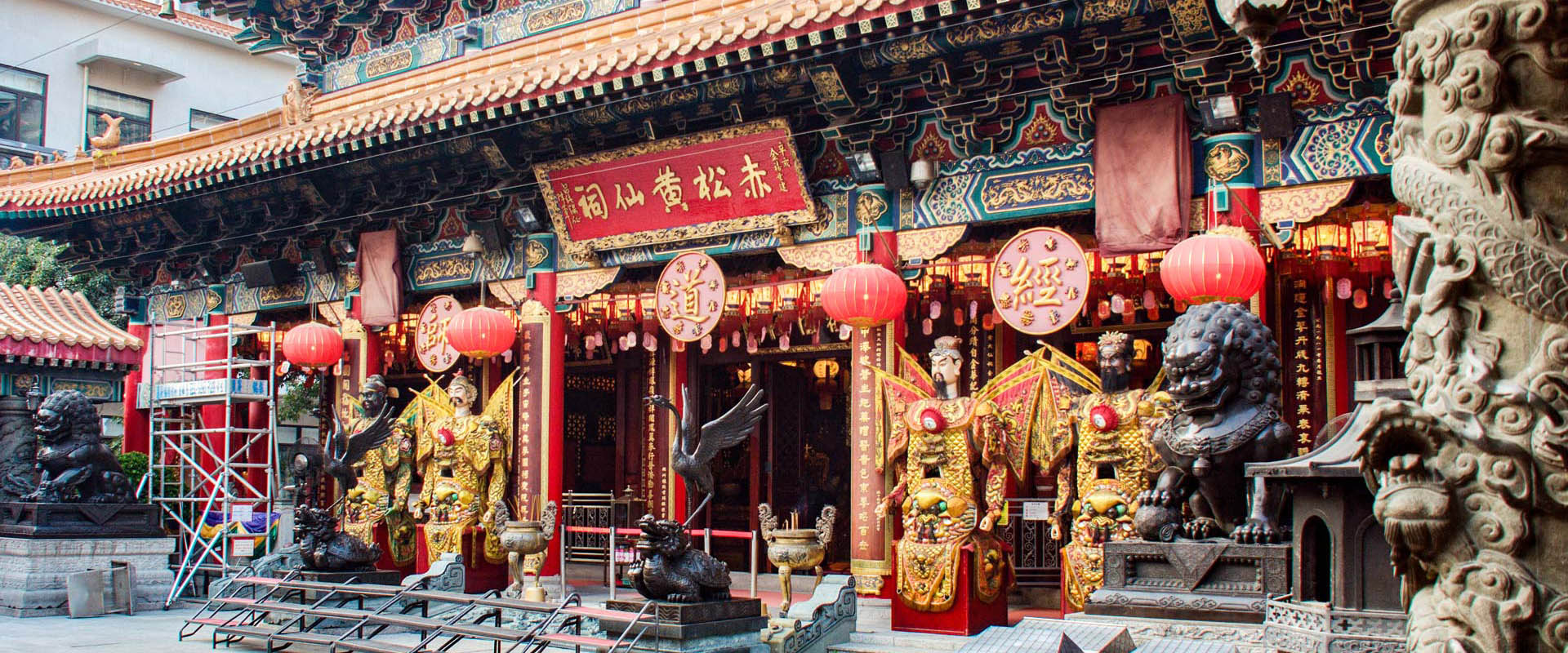Discovering Hong Kong Wong Tai Sin Temple’s Spiritual Heritage
Welcome to another adventure on jusha.travel, where we dive deep into the heart of China’s captivating destinations. If you’re drawn to Hong Kong Wong Tai Sin and its spiritual allure, you’re in for a treat. As one of Hong Kong’s most revered spiritual attractions, Wong Tai Sin Temple offers a profound glimpse into the city’s rich tapestry of traditions. This blog post will guide you through its history, cultural significance, and practical tips for visitors, all while weaving in key aspects of Hong Kong spiritual attractions, cultural attractions in Hong Kong, and unforgettable Hong Kong cultural experiences. Whether you’re a seasoned traveler or a curious culture enthusiast, exploring Wong Tai Sin Temple is a must for any Hong Kong travel guide. Here at jusha.travel, we love sharing tips to make your China journey unforgettable! If you’re interested in other iconic Hong Kong destinations, check out our guide to top cities.
Origins and Historical Development

When it comes to Hong Kong Wong Tai Sin, the story begins with the establishment of Wong Tai Sin Temple, a cornerstone of the city’s spiritual landscape. Built in 1921 in Chuk Yuen, Kowloon, this sacred site was constructed based on divine guidance from Taoist priests, as detailed on the official temple website (About Master Wong Tai Sin). Originally a private sanctuary for monks, it symbolized the “wings of a phoenix” and gradually opened to the public, fully welcoming worshippers by 1956. This evolution reflects Hong Kong’s dynamic history, especially post-World War II, when waves of immigrants and refugees flocked to the area for solace and stability.
Today, Wong Tai Sin Temple stands as a Grade I historic building, a status that highlights its cultural and architectural importance (Wong Tai Sin Temple (Hong Kong)). As a key Hong Kong spiritual attraction, it embodies the resilience of the community, serving as a spiritual anchor amid the bustling urban environment. For travelers seeking authentic Hong Kong cultural experiences, visiting this temple offers a chance to witness how ancient traditions have adapted to modern life, similar to other fascinating Chinese cultural celebrations.
One practical tip for your visit: Plan to arrive early in the morning to avoid crowds, especially during festivals like Chinese New Year. If you’re traveling with family, note that the temple’s serene gardens provide a peaceful spot for reflection, making it an ideal stop on your Hong Hong travel guide. Don’t forget to respect local customs by dressing modestly and keeping your voice low—small gestures that enhance your cultural immersion. For more on Hong Kong’s rich tapestry, check out our guide to historical places.
Wong Tai Sin: The Deity and His Legend

Delving deeper into the mystique of Wong Tai Sin Temple, we uncover the legend of its namesake deity, a figure central to Hong Kong spiritual attractions. Born as Wong Cho Ping in 328 AD during China’s Jin dynasty, he started as a humble shepherd who, at age 15, learned the art of refining herbal medicines from a fairy. After decades of dedicated cultivation, he achieved immortality and became renowned for healing and granting wishes (Wong Tai Sin Temple – Hong Kong Attractions – China Discovery).
This story isn’t just folklore; it’s woven into the temple’s design, which draws from Taoist cosmology and the Five Elements—metal, wood, water, fire, and earth. As you wander the grounds, you’ll notice how these principles influence the layout, creating a harmonious space that blends spirituality with nature. For those exploring cultural attractions in Hong Kong, this temple exemplifies the city’s unique blend of ancient wisdom and contemporary life, much like other iconic sites across China. For more on Hong Kong’s cultural gems, see our dim sum guide.
An interesting fact for culture enthusiasts: Wong Tai Sin’s “what you request is what you get” philosophy has made the temple a popular spot for wish-making. If you’re a foodie traveler, pair your visit with nearby street eats in Kowloon—think steaming dim sum or herbal teas, which tie into traditional Chinese medicine. This connection to health and wellness aligns perfectly with jusha.travel’s mission to highlight China’s holistic travel experiences. Remember, when visiting, try participating in a simple ritual like lighting incense to fully engage with this Hong Kong cultural experience.
Religious Syncretism and Diversity

What sets Wong Tai Sin Temple apart as a premier Hong Kong spiritual attraction is its remarkable religious syncretism, blending Taoism, Confucianism, and Buddhism under one roof. This diversity mirrors Hong Kong’s cosmopolitan spirit, where multiple faiths coexist harmoniously (The Wong Tai Sin Temple). Inside, you’ll find a main altar dedicated to Wong Tai Sin, alongside a portrait of Confucius and a statue of Guanyin (the Buddhist goddess of mercy), making it a true melting pot of beliefs.
As a cultural attraction in Hong Kong, the temple not only houses ancient texts from these traditions but is also the only site in the city authorized to conduct Taoist wedding ceremonies. This unique feature offers visitors a rare insight into how spirituality intersects with daily life, much like the fusion of old and new seen in Hong Kong’s vibrant neighborhoods. For tech-savvy travelers, note that the temple has embraced modern tools, such as digital guides and apps for fortune-telling, blending tradition with innovation—a nod to China’s rapid technological advancements.
If you’re planning a trip, consider combining your visit with nearby sites like the Chi Lin Nunnery or Nan Lian Garden for a full day of Hong Kong cultural experiences. These areas provide a serene contrast to the temple’s energy, and they’re perfect for capturing stunning photos. A practical travel tip: Download a translation app to better understand the inscriptions and rituals, enhancing your connection to China’s diverse heritage as recommended in any comprehensive Hong Kong travel guide. For more on essential Hong Kong spots, explore our guide to Michelin-star restaurants.
Traditions and Spiritual Practices
While exploring Hong Kong Wong Tai Sin, no visit is complete without immersing yourself in the temple’s vibrant traditions. At the heart of it all is the practice of “kau cim,” or fortune-stick readings, where devotees shake bamboo sticks to seek guidance from Wong Tai Sin. This ritual, especially popular during Chinese New Year, draws massive crowds and underscores the temple’s reputation as a place where wishes come true (Wong Tai Sin | Hong Kong Tourism Board).
The temple’s layout, designed around the Five Elements, promotes balance and harmony, a core tenet of Taoist philosophy. Visitors often flock to the Fortune-Telling Arcade for personalized consultations, making this a highlight of Hong Kong spiritual attractions. It’s not just about spirituality; these practices offer a window into everyday Chinese life, including the role of community and charity. For instance, the temple has a history of donating funds to hospitals, reflecting Hong Kong’s compassionate spirit.
To make the most of your Hong Kong cultural experience, time your visit with a festival—such as the lively Mid-Autumn Festival—when the area comes alive with lanterns and performances. Food lovers will appreciate pairing this with local treats like mooncakes or herbal soups, which connect to ancient wellness traditions. As part of your Hong Kong travel guide, always carry cash for offerings and be mindful of etiquette, like queuing patiently, to ensure a respectful and rewarding visit.
In conclusion, Wong Tai Sin Temple is more than just a site; it’s a living testament to Hong Kong’s spiritual depth and cultural resilience, perfectly capturing the essence of Hong Kong spiritual attractions and cultural attractions in Hong Kong. From its historical roots to its diverse practices, this destination offers enriching Hong Kong cultural experiences that inspire and guide travelers on their China adventures. At jusha.travel, we’re passionate about helping you uncover these hidden gems, so whether you’re planning your next trip or reflecting on past journeys, remember that the spirit of exploration is just a click away. For similar experiences, don’t miss our budget travel tips.
We’d love to hear your thoughts—have you visited Wong Tai Sin Temple? Share your stories in the comments below, explore more articles on jusha.travel for additional China travel inspiration, or check out related posts like our guides to other Hong Kong Wong Tai Sin experiences. Safe travels!

